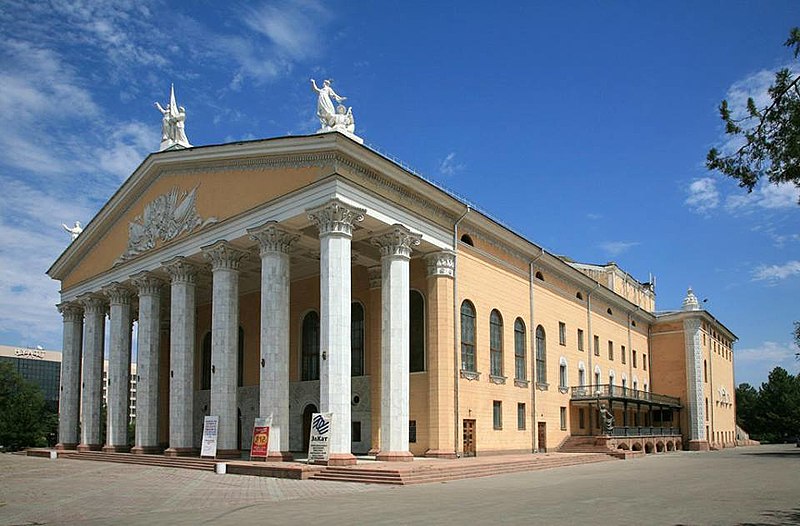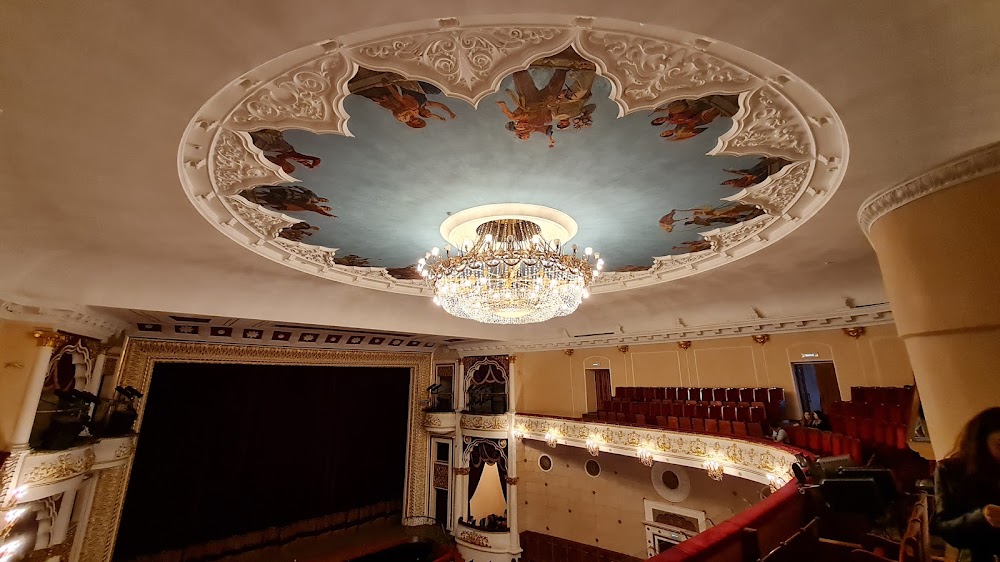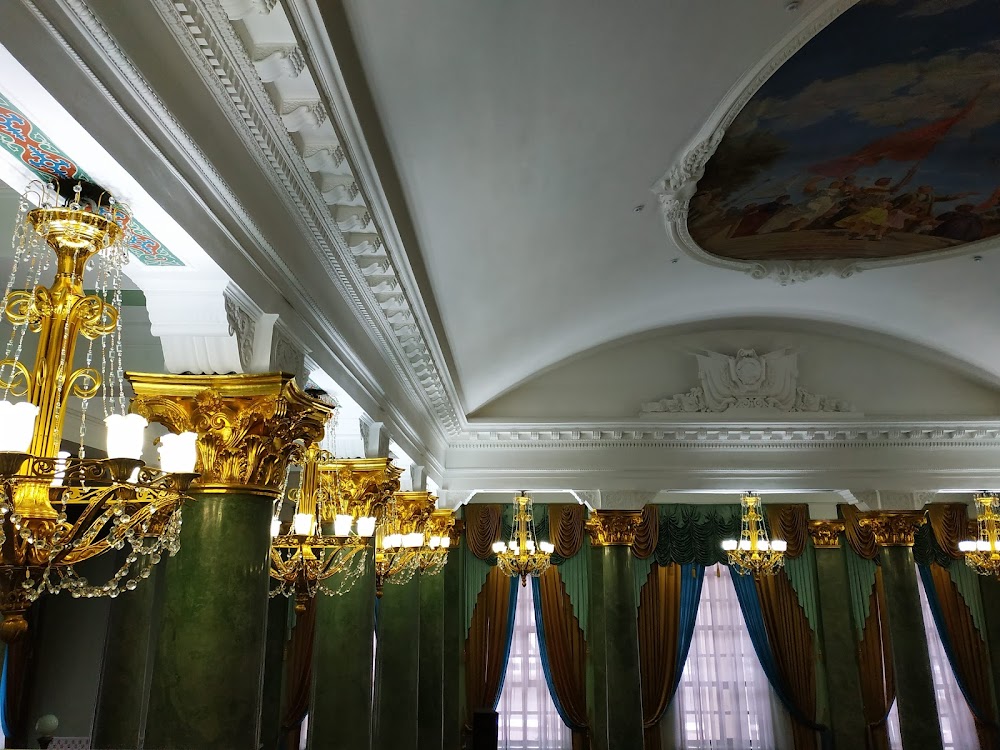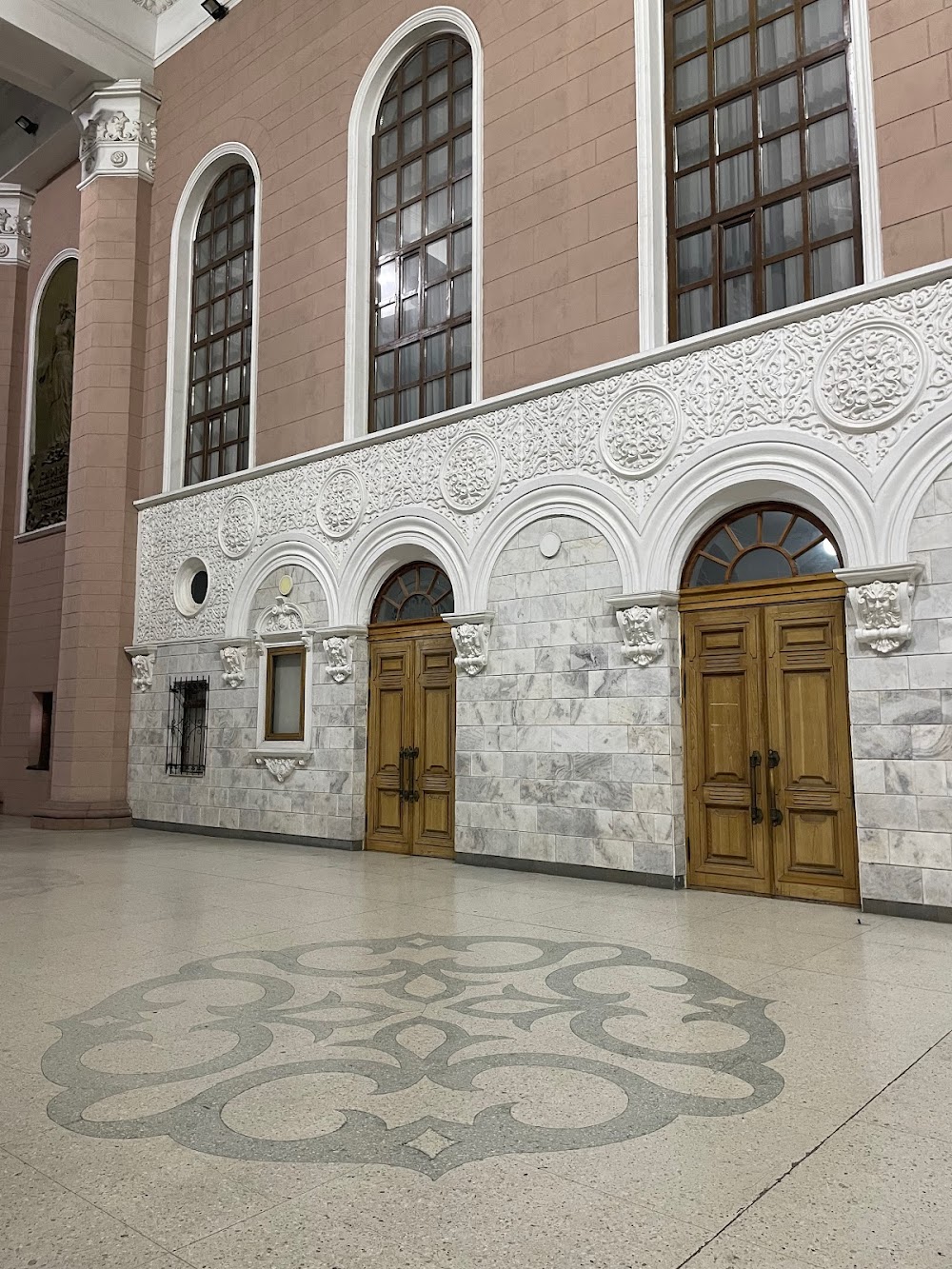Kyrgyz National Opera and Ballet Theatre (Кыргыз улуттук опера жана балет театры)
Overview
The Kyrgyz National Opera and Ballet Theatre, nestled in the heart of Bishkek, Kyrgyzstan, stands as a prestigious institution steeped in a rich history that spans several decades. This vibrant cultural landmark not only showcases the artistic heritage of the country but also reflects the dedication and passion of the artists, architects, and community members who brought it to life.
The vision for an opera and ballet theater in Bishkek took root in the early 20th century when the region was still under Soviet rule. This era was marked by a cultural renaissance across many Soviet republics, including Kyrgyzstan. Artists and intellectuals sought a venue where they could celebrate their talents and traditions while embracing the flourishing art forms from across the Soviet Union.
Construction of the theater commenced in 1936, receiving support from the Soviet government as part of broader initiatives to promote culture and the arts. A talented group of architects, led by A.V. Shchusev and V.A. Shuko, renowned for their contributions to Soviet neoclassical architecture, was entrusted with the design of the building. The theater's architectural style is a striking blend of neoclassicism and monumentalism, resulting in an imposing yet elegant structure that has become a hallmark of Bishkek.
Building the theater was a monumental task, demanding substantial resources, skilled labor, and meticulous planning. Despite various challenges, construction progressed steadily, with artisans and laborers working tirelessly to bring the architects' vision to fruition. The theater was completed in 1941, coinciding with the onset of World War II in Europe. Nevertheless, its inauguration provided a brief but much-needed cultural respite for the local population amid the turmoil of war.
In its early years, the theater primarily showcased performances by local artists and ensembles. The repertoire featured classical Western operas and ballets alongside works by Soviet composers, creating a unique cultural identity for the theater. Over time, it emerged as a hub for artistic exchange, attracting talent from across the Soviet Union.
The post-war era saw significant growth and development for the theater. The 1950s and 1960s marked a particularly fruitful period, with the theater earning recognition for its exceptional performances and contributions to the arts. New productions emerged, ranging from ballets and operas rooted in Kyrgyz folklore to contemporary works by both Soviet and international composers, fostering dynamic artistic growth and innovation.
The theater also played a pivotal role in nurturing local talent. Many of Kyrgyzstan's most celebrated opera singers, ballet dancers, and musicians received their training within its walls. The establishment of the theater's own ballet and opera schools solidified its status as a center for artistic excellence, providing comprehensive training that produced a new generation of internationally acclaimed artists.
Over the years, the Kyrgyz National Opera and Ballet Theatre has undergone numerous renovations to preserve its grandeur and adapt to modern performance standards. One of the most significant renovations occurred in the early 2000s when the theater was closed for several years. This extensive project aimed to restore the building's historical features while incorporating state-of-the-art facilities, ensuring that the theater remains a venue for world-class performances in a setting that honors its storied past.
Today, the Kyrgyz National Opera and Ballet Theatre stands as a symbol of cultural pride and artistic achievement. It continues to be a vibrant center for the performing arts, offering a diverse repertoire that includes both classical and contemporary works, featuring performances by local and international artists alike. Its commitment to preserving and promoting the arts has made it an integral part of Kyrgyzstan's cultural landscape.
In conclusion, the Kyrgyz National Opera and Ballet Theatre in Bishkek is more than just a physical structure; it is a living institution that embodies the artistic spirit of Kyrgyzstan. Its journey from conception to the present day serves as a testament to the enduring power of the arts to inspire, entertain, and unite people. Through its performances and educational programs, the theater continues to enrich the cultural fabric of Kyrgyzstan, ensuring that the legacy of its founders endures for generations to come.






